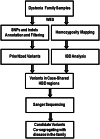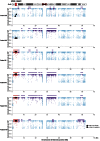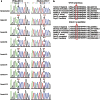Homozygous mutation of VPS16 gene is responsible for an autosomal recessive adolescent-onset primary dystonia
- PMID: 27174565
- PMCID: PMC4865952
- DOI: 10.1038/srep25834
Homozygous mutation of VPS16 gene is responsible for an autosomal recessive adolescent-onset primary dystonia
Abstract
Dystonia is a neurological movement disorder that is clinically and genetically heterogeneous. Herein, we report the identification a novel homozygous missense mutation, c.156 C > A in VPS16, co-segregating with disease status in a Chinese consanguineous family with adolescent-onset primary dystonia by whole exome sequencing and homozygosity mapping. To assess the biological role of c.156 C > A homozygous mutation of VPS16, we generated mice with targeted mutation site of Vps16 through CRISPR-Cas9 genome-editing approach. Vps16 c.156 C > A homozygous mutant mice exhibited significantly impaired motor function, suggesting that VPS16 is a new causative gene for adolescent-onset primary dystonia.
Figures





References
-
- Fahn S. Concept and classification of dystonia. Adv Neurol 50, 1–8 (1988). - PubMed
-
- Lohmann K. & Klein C. Genetics of dystonia: what’s known? What’s new? What’s next? Mov Disord 28, 899–905 (2013). - PubMed
-
- Ozelius L. J. et al. The early-onset torsion dystonia gene (DYT1) encodes an ATP-binding protein. Nat Genet 17, 40–8 (1997). - PubMed
Publication types
MeSH terms
Substances
LinkOut - more resources
Full Text Sources
Other Literature Sources
Molecular Biology Databases

